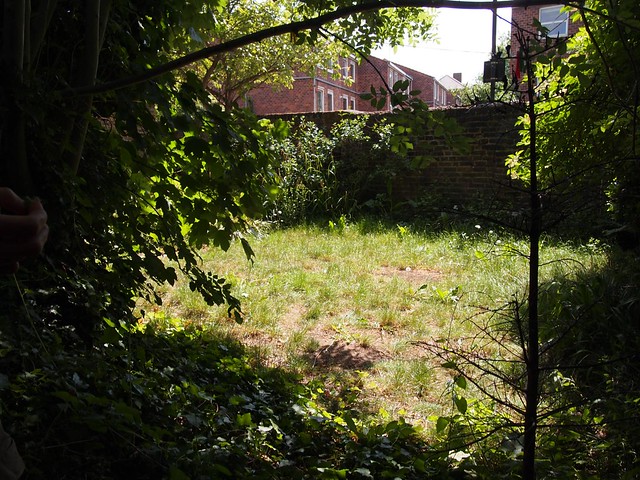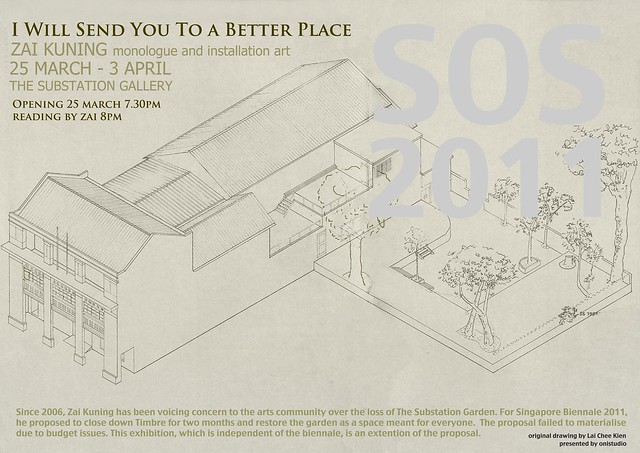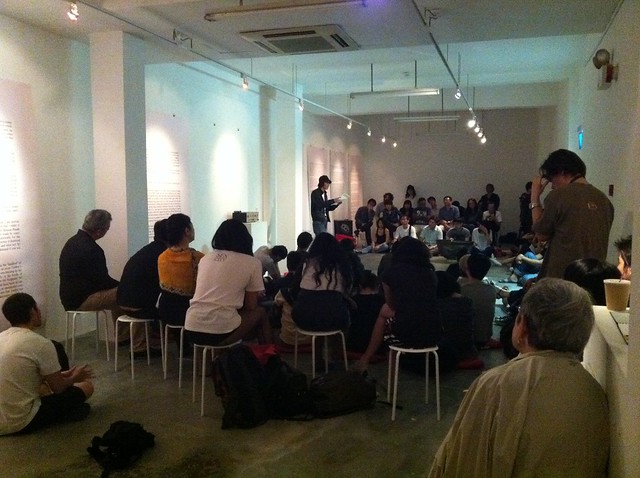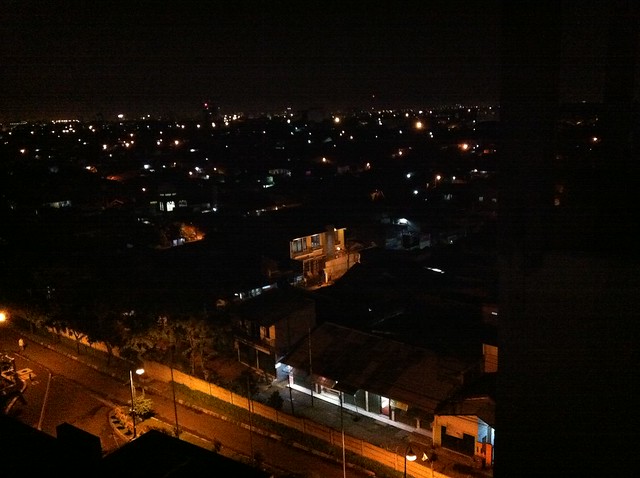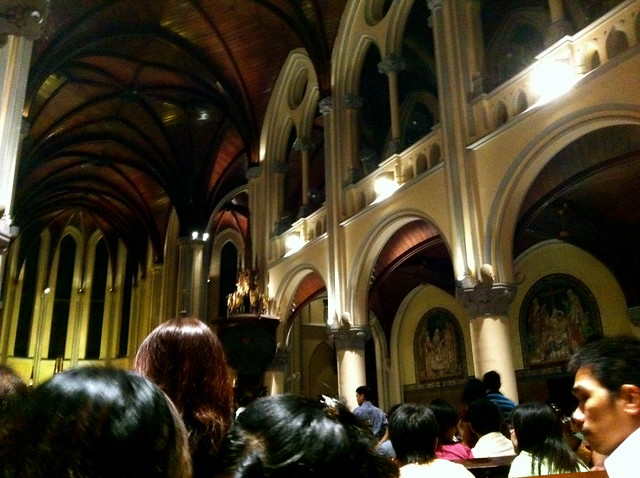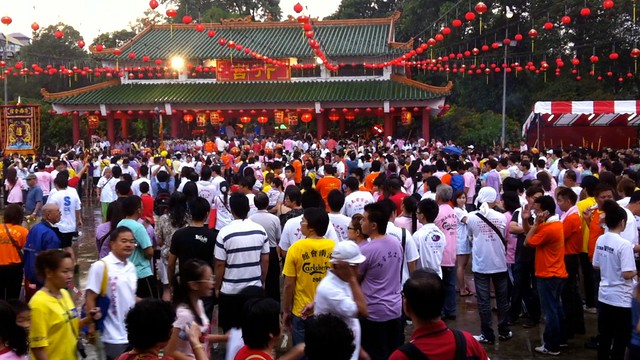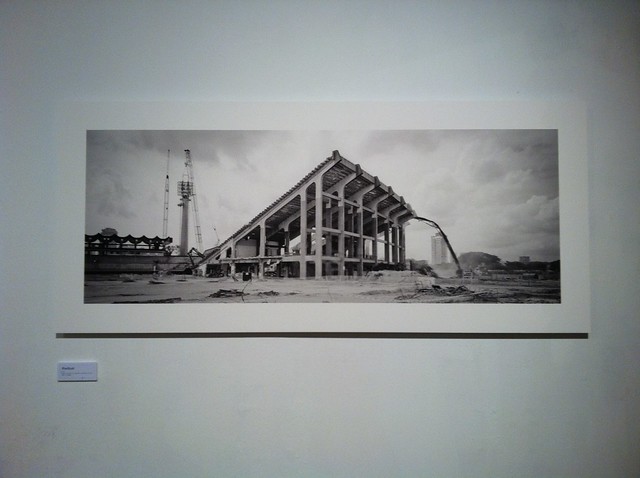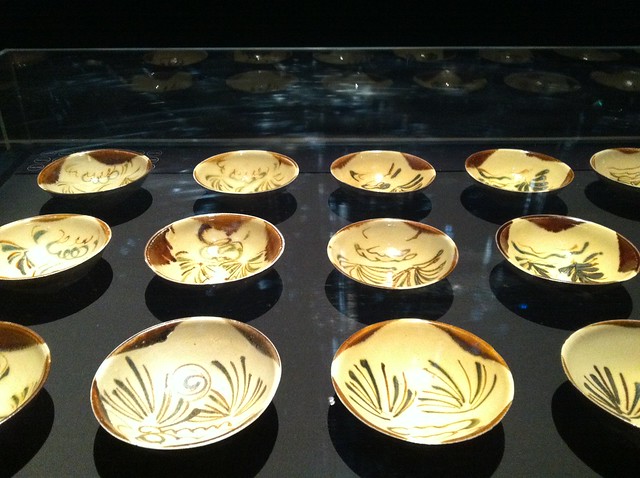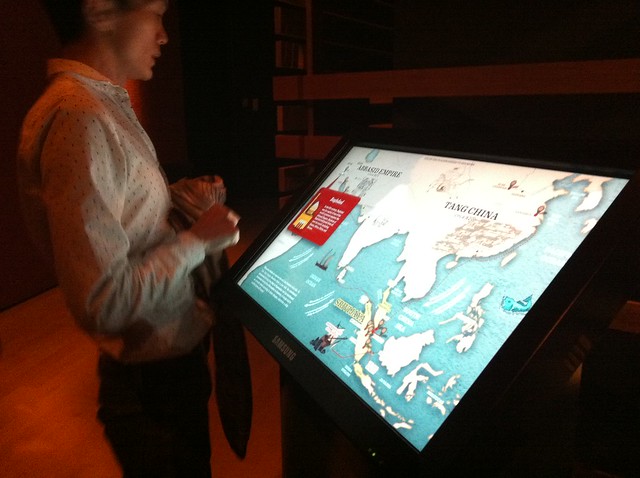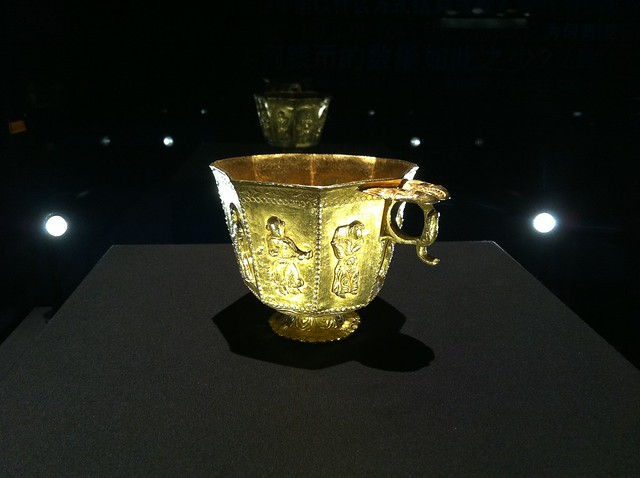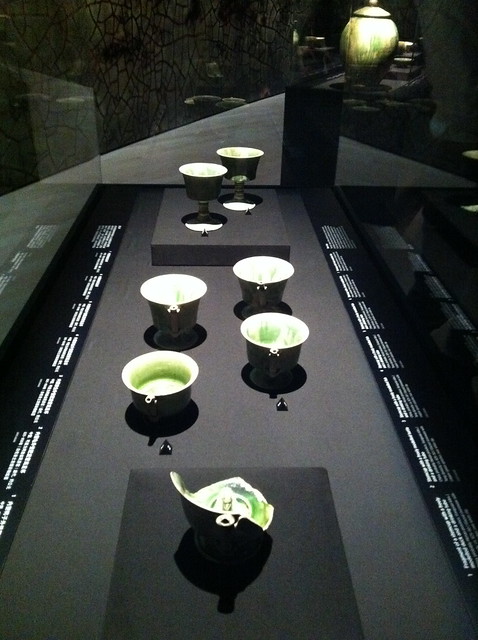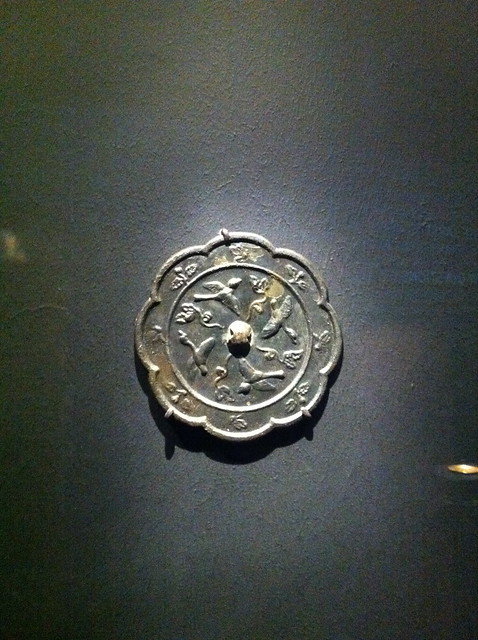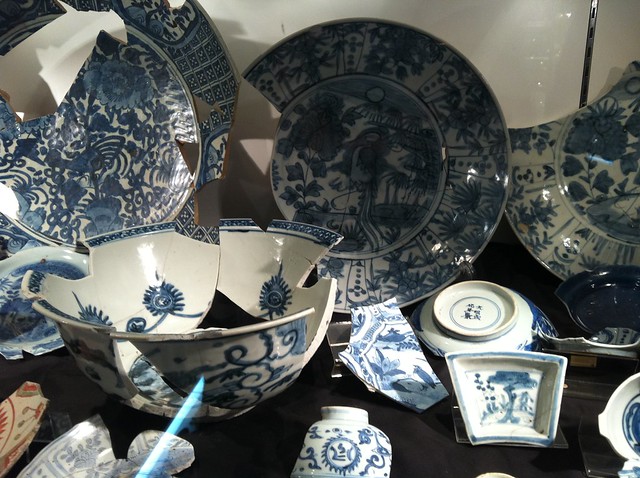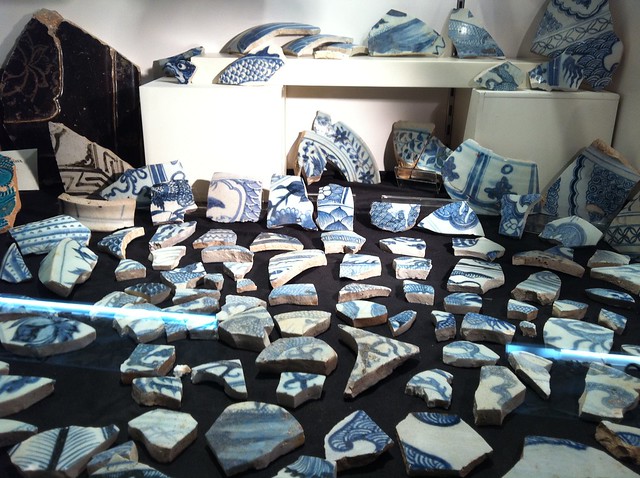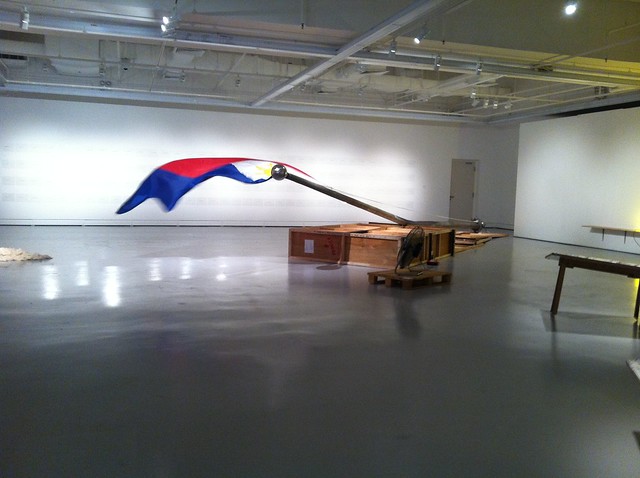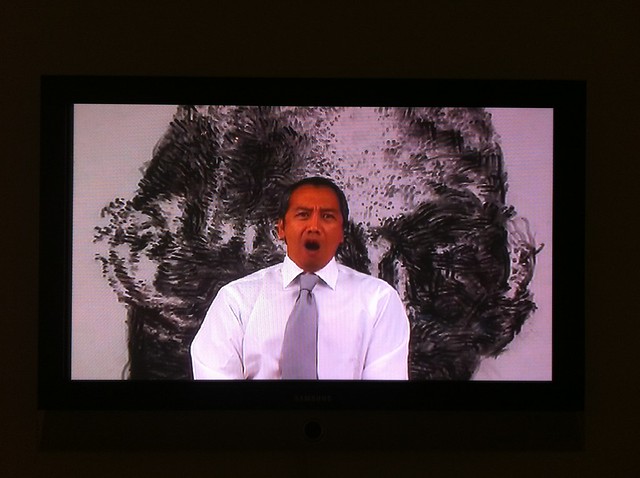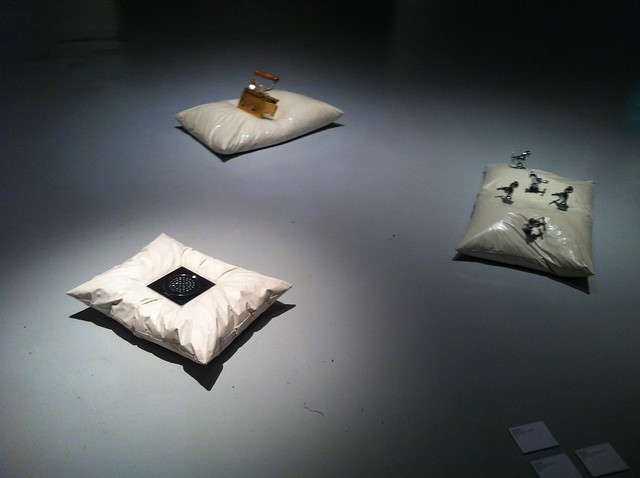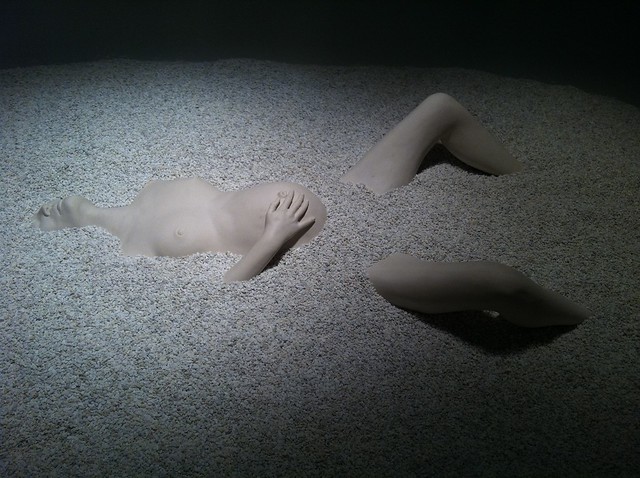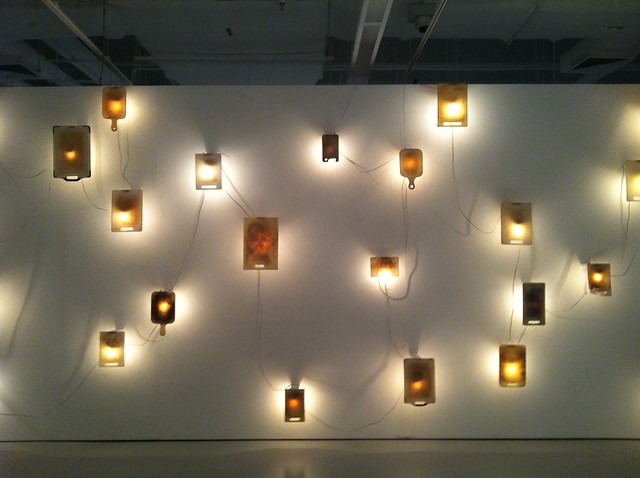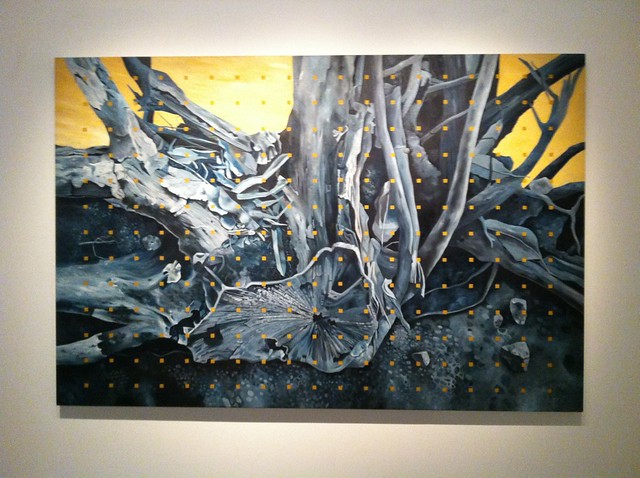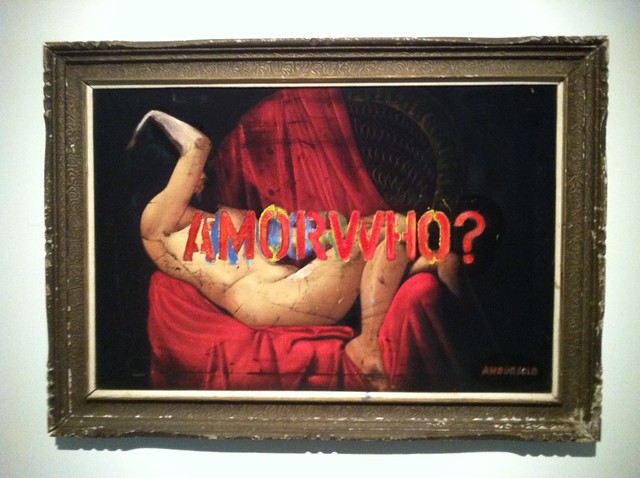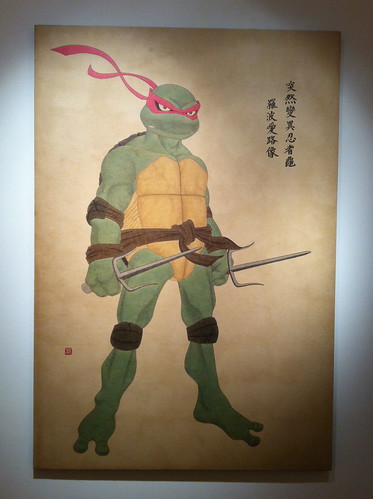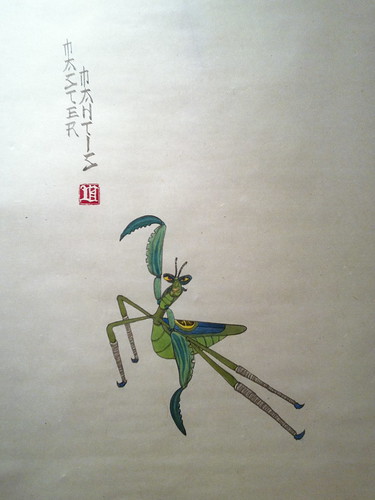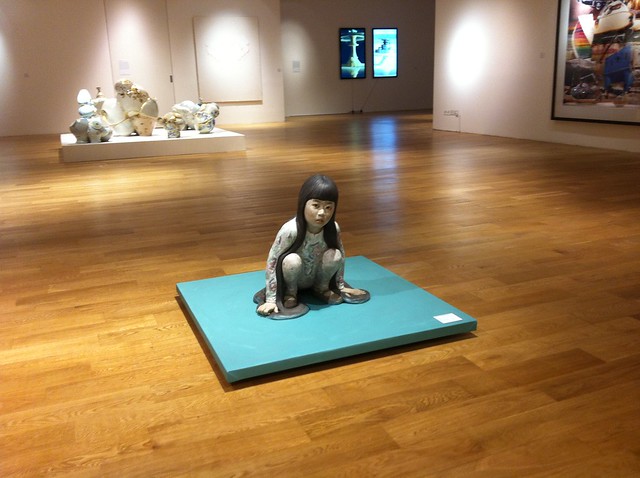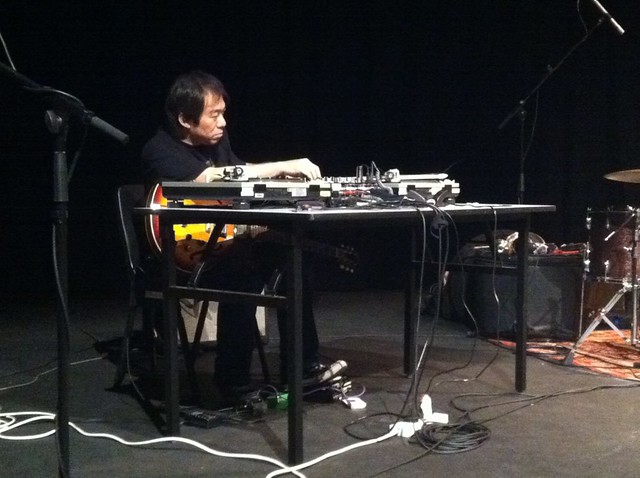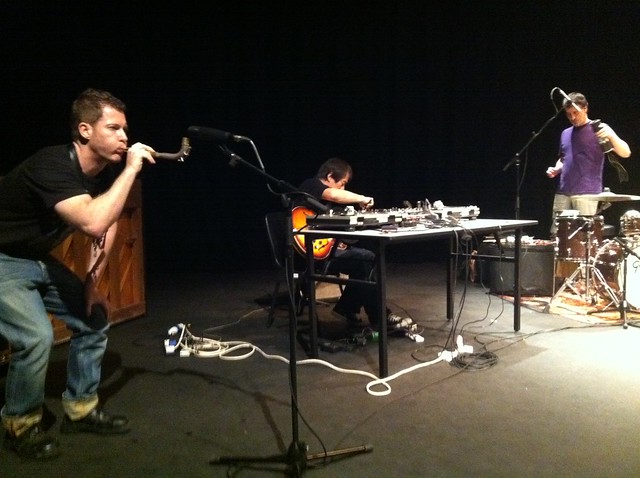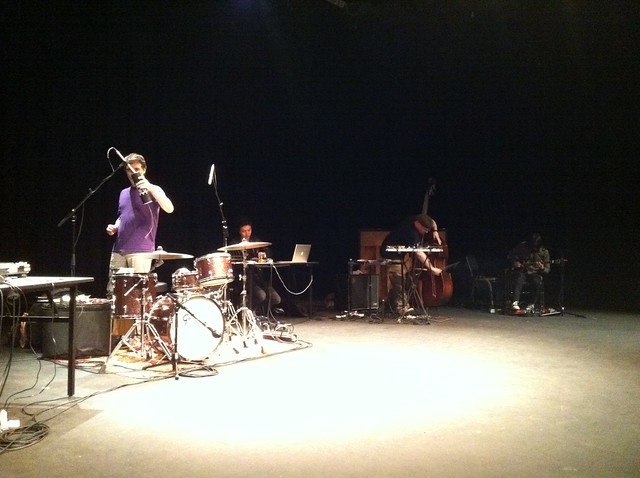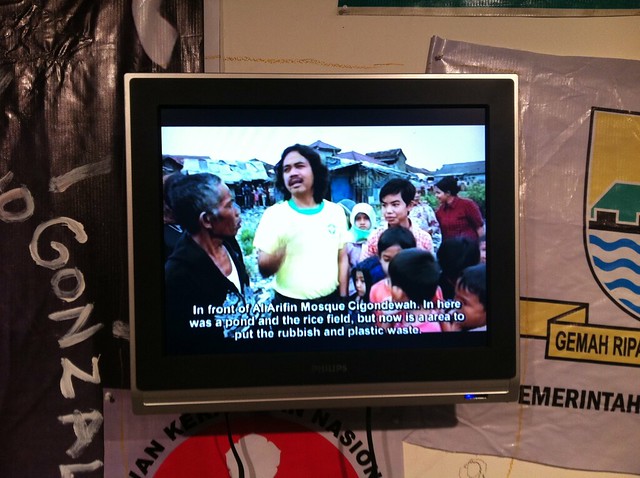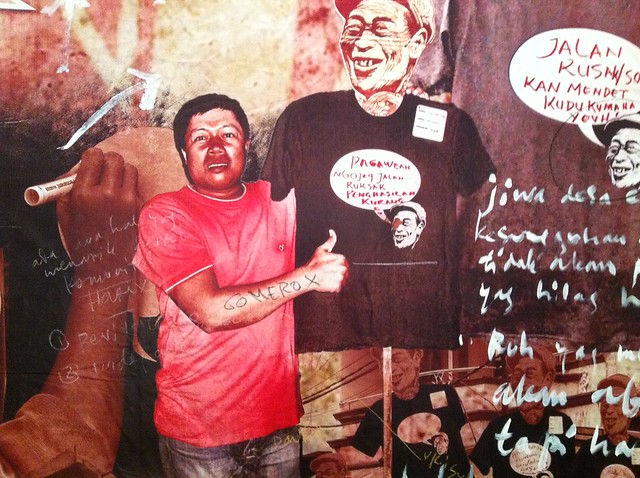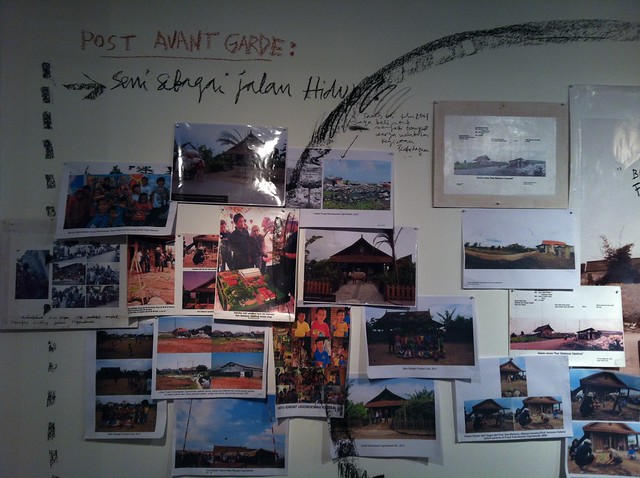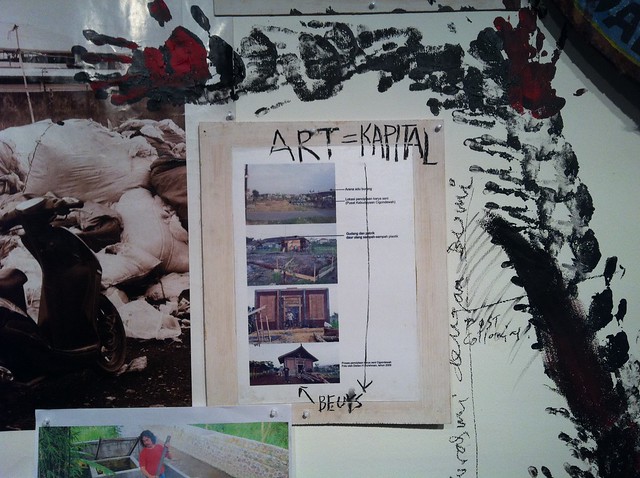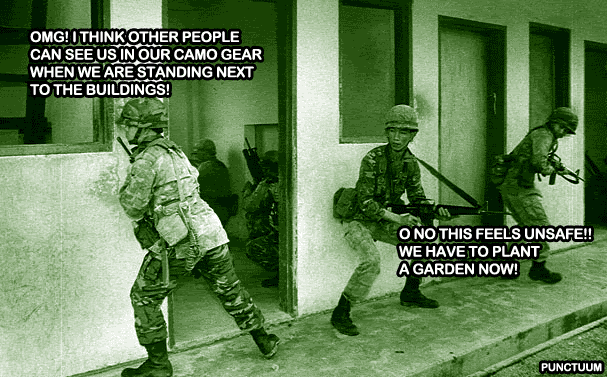Last December, I made a short trip to Jakarta which incidentally coincided with the opening of the ruangrupa "Decompression 10th Anniversary" exhibition at Galeri Nasional Indonesia. A whole month of exhibitions, talks, shows, and performances spread out over various locations in jakarta (and scattered over numerous buildings within the Galeri Nasional compound), this exhibition was huge! so vast! it was like art/information overload for the visitor who might not be so well acquainted with Jakarta or the art scene in Indonesia.
However one thing I wanted to write down was that there were two things which were quite interesting to me at that show - Arjan van Helmond's House and Memory, and ruangrupa's "Apartment Project". During that trip to Jakarta, we also happened to be coincidentally staying at a friend of a friend's place at Taman Rasuna, one of the residences discussed in the works.
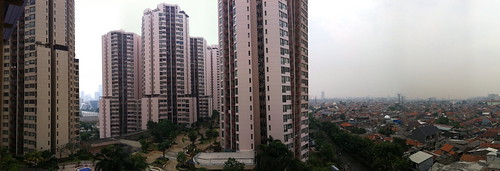
The view from the balcony of Taman Rasuna (Tower 9)A staggeringly massive condominium development by Bakrie Group consisting of 15 highrise towers, landscaped gardens, multiple swimming pools and other luxury facilities, Taman Rasuna towers over the adjacent low-rise area which is seperated from "Bakrieland" by a high wall and barbed wires. the 4th floor features an "open sky podium" which is said to be one of the few of its kind in Indonesia (but this type of condo development will probably look quite familiar to Singaporeans).
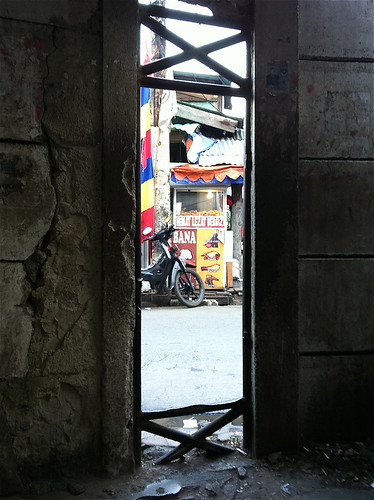
A narrow hole in the wall is the gateway between the two worlds. On one side, in the shadow of the 214m tall Bakrie Tower and in walking distance from international embassies and Jakarta's CBD, you'll find 45000rp coffees at Starbucks, the organic "farmer's market", and the other predictably glossy accoutrements of commercialism and modernity. But not more than a 10 minutes walk away, behind the fence, it is the typical Jakarta urban sprawl, teeming with muezzins wailing, ramshackle houses scattered in all directions, speeding bajajs, rubbish dumps, and parts of the cemetery upon which Towers 1-4 of Taman Rasuna is said to have been also built over.
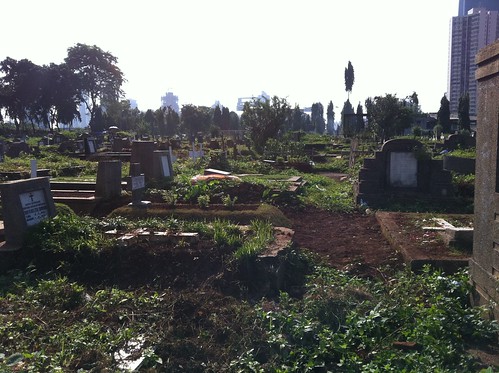
Cemetery
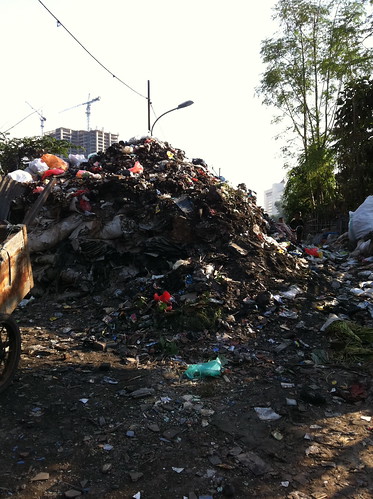
Mountain of RubbishArjan van Helmond's House and Memory is a collection of sketches in which residents were asked to draw where they used to live based entirely on memory, which naturally allowed people some freedom of imagination where their self-drawn maps and floorplans were concerned. Some of the sketches were by people who previously lived in the areas which had been bought over and redeveloped to build Taman Rasuna, some others were by people who were currently living in Taman Rasuna, and some others were residents in other types of housing.

In the accompanying book for the Apartment Project, they write that in Indonesia, land is seen as the source of life and power; houses occupy space and land and are also representations of power. the most obvious spatial difference between the rich/modernised areas and the less developed areas is that apartment housing is vertical whereas the dense urban sprawl of jakarta develops horizontally. when we draw maps we draw them on a flat plane, but highrise buildings do not have the same relation to the ground as the simple single-storey houses found in jakarta. so even when we try to draw our maps, the normal orientation and notion of space is altered.
The question that would be interesting for me is whether/how this spatial difference between horizontal and vertical housing affects the perceptions of social relations.
For a land-scarce country like Singapore, landed property retains its position as the ultimate symbol of power because of its scarcity and cost as compared to vertical housing such as the public HDB flats. yet in Jakarta where land is much more plentiful, it is the vertical housing developments such the Taman Rasuna which are the symbols of economic power as opposed to the rabble of small landed houses on the other side of the fence.
As a casual and transient observer, I wonder if the highrise flats have the effect of instilling the notion of social motility (or perhaps even aspirations of upward social mobility). i almost want to relate this back to the indonesian concept of "nongkrong" - which is to hang out to do absolutely nothing except hang out and sit around. one will frequently observe that labour is so cheap in indonesia that even say the bakso stall in a fancy mall can afford to hire ridiculous numbers of staff to man a simple stall - resulting in what looks to me like a massive nongkrong of bored 20-something year olds sitting behind the counter. (in this case they are supposed to be working, so it is not quite nongkrong, but it certainly seems to echo with this sense of life having come to a standstill. from my perspective as an insufferable workaholic (and perhaps also partly from my upbringing in Singapore), i find that the concept of staying still in one place (and not doing anything in particular) smacks of boredom, but perhaps boredom is not the case for people there, coming from completely different perspective; from a land where houses simply take up space on land and aren't always piled up in stacks, with every stack of houses fighting to be taller than the next.

Jakarta City Map



